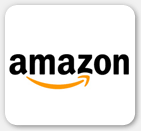How to Create Effective KPIs
- Julian Talbot
- Jun 19, 2017
- 2 min read
If you've ever used Key Performance Indicators, you've probably found yourself wondering if they were worth the bother? Some we record simply because we can, others because we have always tracked them in the past. Some of the better KPIs will shape behaviours that help your organization achieve objectives, while others simply tell you if objectives were achieved. Not all of them are useful but how do you tell the difference? Which ones drive performance and which ones are a waste of time and money?
You can build KPIs any number of ways, but one approach is to link risks, objectives and KPIs. Think of it this way.
Objectives: What do you want to achieve? It seems easy to use the objectives as KPIs but that can be a very binary, yes or no, metric. It’s also usually a lag indicator, too late to change anything. If you want MEANINGFUL KPIs, it’s not so simple. A useful approach is to remember that having objectives means you have risks and so ask:
Which risks could impact this objective?
What strategies can manage these risks?
Next are CSFs. The Critical success factors that must occur for the strategy to work.
KRAs are the key result areas which effect how your strategies convert into objectives.
Last but not least, KPIs! What data, statistics, or indicators will tell you if you are achieving or going to achieve your objectives?
It helps to think of it as a cycle rather than a linear process so lets work an example.
Say one of your objectives is to “Maintain at least 10% profit margins” at your plastics manufacturing company.
A key risk might include: Fail to maintain profit margins due to overpricing and losing sales, or underpricing, and missing profits, as caused by fluctuations in raw material costs
You might choose a Risk Treatment which involves training salespeople to understand the effect of raw material costs on wholesale prices so their quotations are always profitable.
A CSF or critical success factor, in making this strategy work would be developing an awesome (or at least decent) training package
The KRA; key result area; might be training all salespeople within 3 months and including it in induction training for new salesstaff
Depending on your business, you might choose a KPI that all new contracts have at least 25% gross margin, to leave some room to ensure at least 10% net profit.
And around we go, to your original objective of at least 10% profit margin. But now, we have a lead KPI which tells you if you are on your way to achieving your objectives for next reporting period.

Various organizations, and even different departments within an organisation will need different KPIs; but the bottom line is that KPIs either support objectives or they don’t.
If you can show a causal link through the chain of risks, risk treatments, CSFs, KRAs, KPIs and objectives you are probably on a winner. Now try using this framework on your existing KPIs. Can you link KPIs to objectives via a solid chain? Do you your KPIs reflect metrics that actually effects objectives? If not, you now have an idea of where to start.
If you found this article helpful, you might find also find this book of interest
















The best part of the OVO game is mastering the wall jumps.
Thank you. Very useful